
Duikers
In this gallery:
Red-flanked Duiker (Cephalophus rufilatus)
Natal Red Duiker (Cephalophus natalensis)
Western Blue Duiker (Philantomba congica)
Kalahari Bush Duiker (Sylvicapra grimmia steinhardti)
Southern Bush Duiker (Sylvicapra grimmia grimmia)
Limpopo Bush Duiker (Sylvicapra grimmia caffra)
Ethiopian Red Duiker (Sylvicapra grimmia abyssinica)
The Common Duiker (Sylvicapra grimmia), also known as the grey or bush duiker, is a small antelope and the only member of the genus Sylvicapra. This species is found everywhere in Africa south of the Sahara, excluding the Horn of Africa and the rainforests of the central and western parts of the continent. Generally, they are found in habitats with sufficient vegetation cover to allow them to hide—savanna and hilly areas, including the fringes of human settlements.
Colouration of this species varies widely over its vast geographic range. There are 14 subspecies described, ranging from chestnut in forested areas of Angola to grizzled gray in northern savannas and light brown shades in arid regions. It grows to about 50 cm (20 in) in height and generally weighs 12 to 25 kg (26 to 55 lb); although females are generally larger and heavier than the males. Only the male has horns and these can grow to 11 cm (4.3 in) long.
Breeding is year round and the female gives birth to one fawn after a gestation period of 6 to 7.5 months. The common duiker has a wide diet; beyond browsing for leaves, flowers, fruits and tubers, they will also eat insects, frogs, small birds and mammals, and even carrion. As long as they have vegetation to eat (from which they get some water), they can go without drinking for very long periods. In the rainy season, they will frequently not drink water at all, instead obtaining fluids from fruits. They will often scavenge for these fruits below trees in which monkeys are feeding. They are active both day and night, but become more nocturnal near human settlements, presumably due to the presence of feral dogs and humans.
Males are territorial and smear gland secretions on rocks and branches to mark their territories; their preferred resting places are generally on elevated ground, where they can observe their territory. Females, by contrast, prefer deeper cover. The overall success of this species stems from its ability to inhabit a wide variety of habitats, as well as from its adaptable, generalist diet.
The next three galleries are of subspecies of Sylvicapra grimmia seen in various locations in Africa:
Ethiopian Red Duiker (Sylvicapra grimmia abyssinica) - Ethiopia Endemic


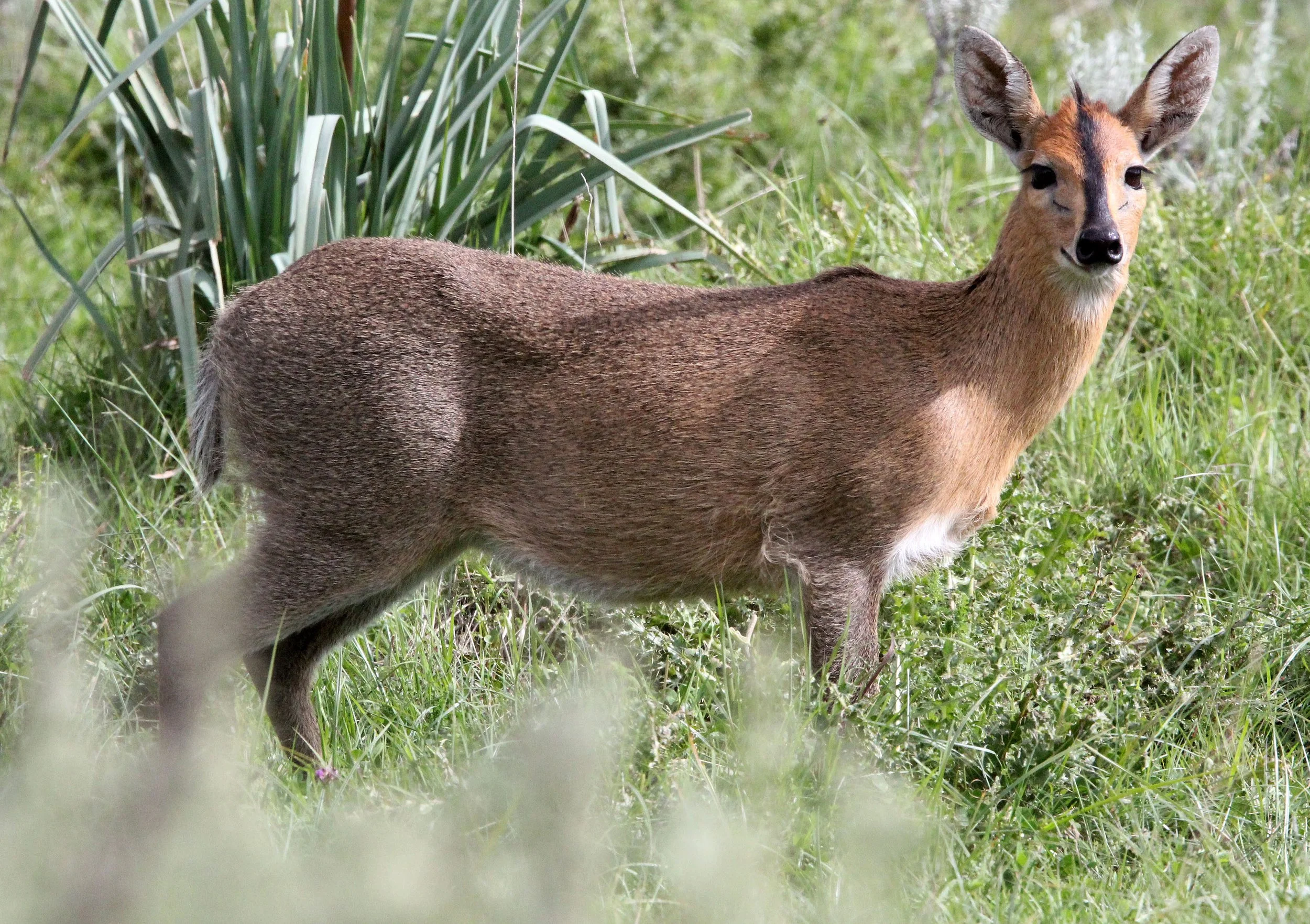





















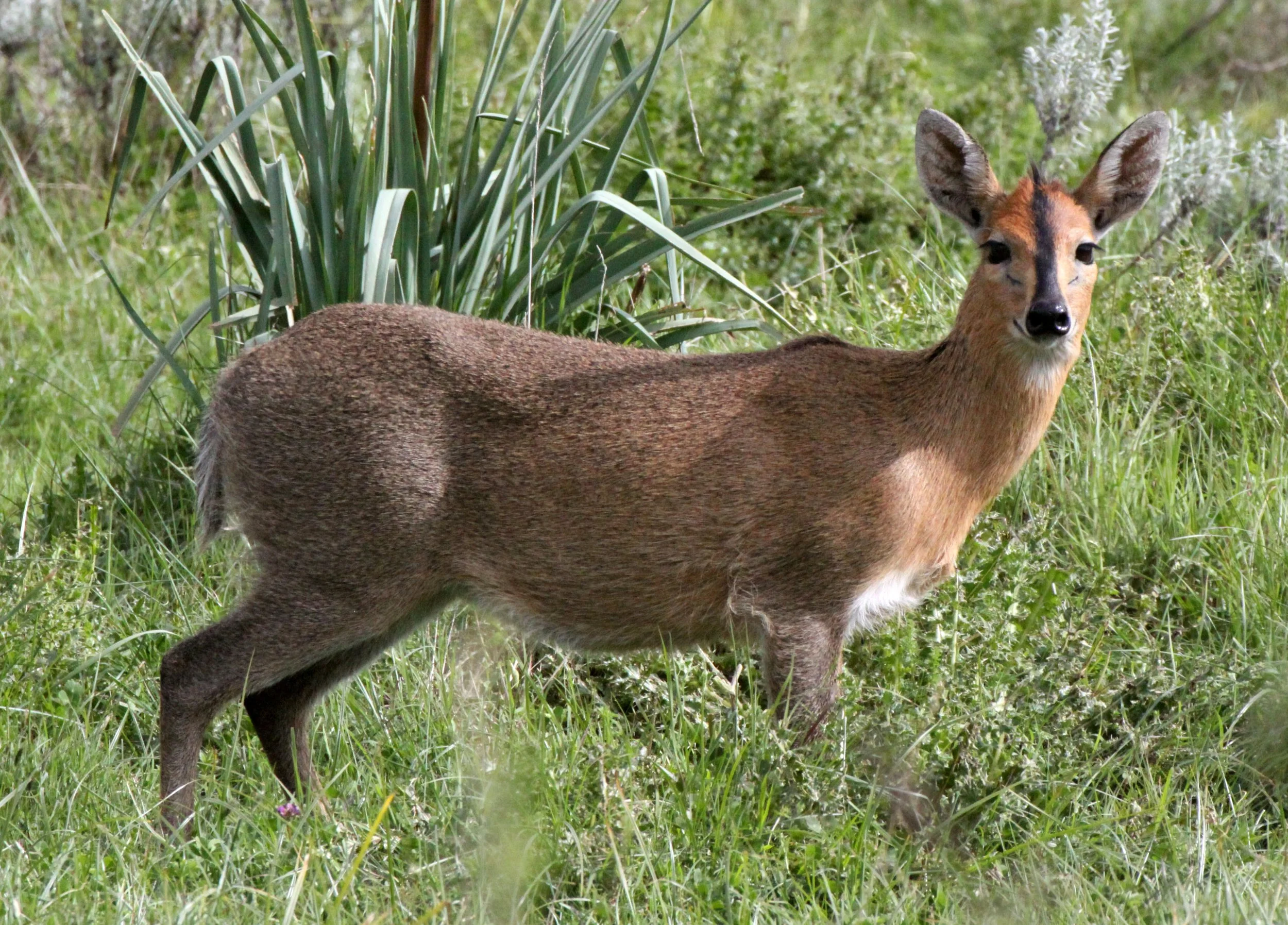






Limpopo Bush Duiker (Sylvicapra grimmia caffra) - Pilanesberg South Africa
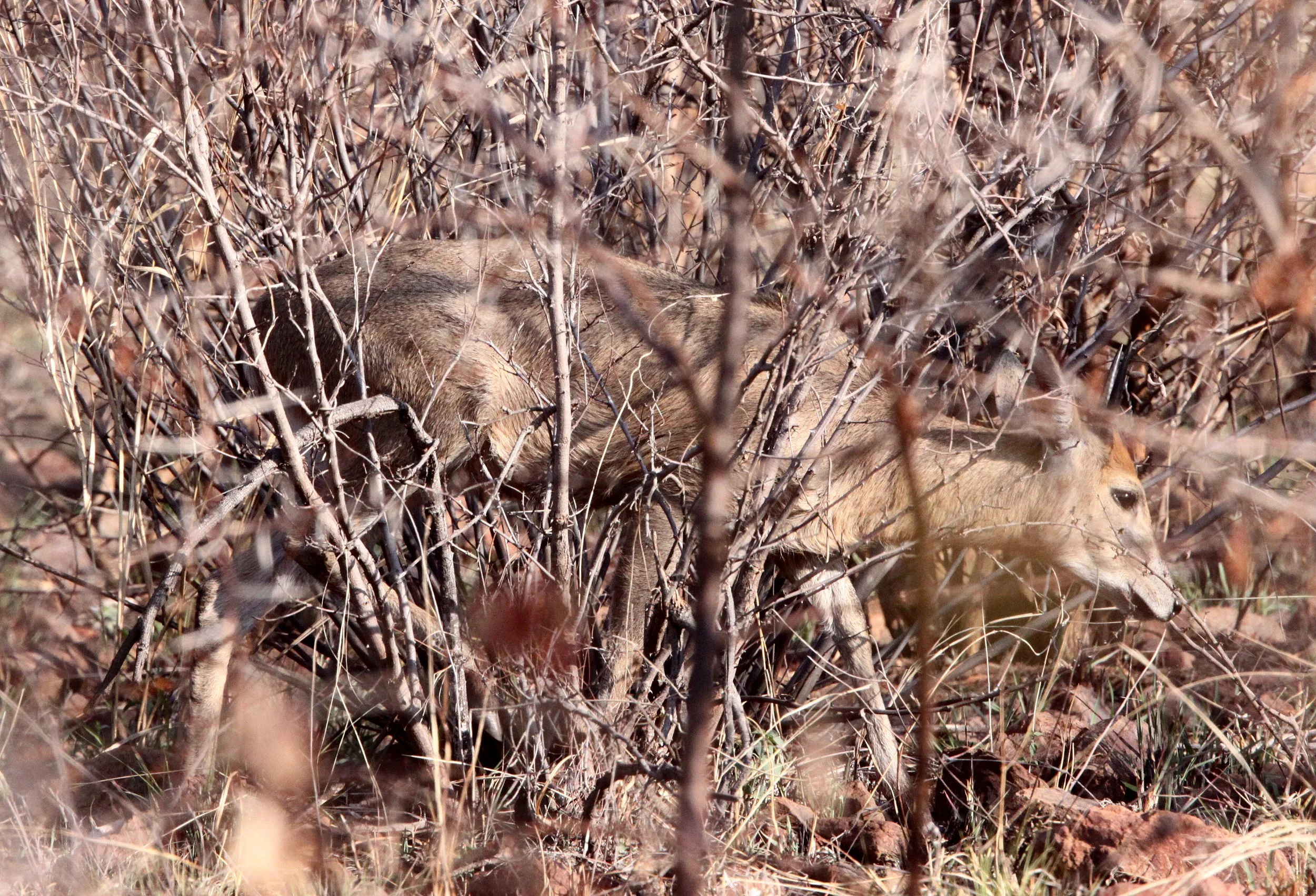






Southern Bush Duiker (Sylvicapra grimmia grimmia) - Karoo South Africa









Kalahari Bush Duiker (Sylvicapra grimmia steinhardti) - Kgalagadi National Park


The Blue Duiker (Philantomba monticola) is a small antelope found in central, southern and eastern Africa. It is the smallest duiker. The species was first described by Swedish naturalist Carl Peter Thunberg in 1789. 12 subspecies are identified. The blue duiker reaches 32–41 centimetres (13–16 in) at the shoulder and weighs 3.5–9 kilograms (7.7–19.8 lb). Sexually dimorphic, the females are slightly larger than the males. The dark tail measures slightly above 10 centimetres (3.9 in). It has short, spiky horns, around 5 centimetres (2.0 in) long and hidden in hair tufts. The subspecies show a great degree of variation in their colouration. The blue duiker bears a significant resemblance to Maxwell's duiker.
Activity is diurnal (limited to daytime). Secretive and cautious, the blue duiker confines itself to the forest fringes. Territorial, individuals of opposite sexes form pairs and occupy territories, nearly 0.4–0.8 hectares (0.0015–0.0031 sq mi) large and marked by preorbital gland secretions. The blue duiker feeds on fallen fruits, foliage, flowers and pieces of bark, provided mainly by the forest canopies in their habitat. The age when sexual maturity is gained has been given differently by different studies. The species is monogamous, with pairs remaining together throughout the year. The length of the gestational period has been estimated from as little as four months to as long as seven months. Births occur throughout the year, though the birth rate might fall in the dry season. The calf is mainly kept in hiding and weaning occurs at 2.5 to 3 months.
The habitat consists of a variety of forests, including old-growth, secondary, and gallery forests. Forests are preferred as these provide the animal with shelter through the dense understory and forage through the canopy. Though categorized as Least Concern by the International Union for Conservation of Nature and Natural Resources (IUCN), the blue duiker is under threat from extensive bushmeat hunting across its range.
Western Blue Duiker (Philantomba congica) - Central African Republic

The Red Forest Duiker, Natal duiker, or Natal red duiker (Cephalophus natalensis) is a small antelope found in central to southern Africa. It is one of 22 extant species form the subfamily Cephalophinae. While the red forest duiker is very similar to the common duiker, it is smaller in size and has a distinguishing reddish coloring. Additionally, the red forest duiker favors a denser bush habitat than the common duiker. The Natal red duiker is more diurnal and less secretive than most forest duikers, so therefore it is easier for them to be observed. In 1999, red forest duikers had an estimated wild population of 42,000 individuals.
Red forest duikers have a body length of up to 1 m, a typical shoulder height of 43 cm, and an average mass of 14 kg. Both sexes have short, straight horns about 6 cm long, although in females they may be smaller in size. Towards the base, the horns have coarse rings and longitudinal striations, but they are smooth towards the tips. The longest recorded length of horns for the red forest duiker is 11 cm.
The red forest duiker is a rich reddish-brown in color, although the underparts are typically paler. The hairs on the chin, throat, and insides of the ears are commonly a shade of white. A tuft of reddish-brown and black hairs grow between the horns, and the tail has a white tip.
A notable characteristic of the Natal red duiker's appearance is its hunched back, with front legs shorter than the hind legs. These longer hind legs are in a crouched position, which serves as an advantage when the duiker senses danger and needs to flee by allowing the individual to leap quickly into nearby brush.
Red forest duikers tend to roam singly, in pairs, or small family groups, and it is rare to see a group of more than three individuals. The cry of red forest duikers is rather distinctive, loud, and penetrating, sounding somewhere between a snort and a whistle.[6] The call of a duiker becomes a throaty cry when the animal is distressed. When the duiker has been spotted by a predator, it will first freeze, and then bound away with the characteristic duiker diving motion into the safety of the thick brush. Some of the common predators of the red duiker include eagles, pythons, and leopards.
Also, red forest duikers are quite territorial, and they often mark their territory by using a substance secreted from the maxillary glands near their eyes. A duiker will practice this scent marking by rubbing its face on grass, twigs, bark or other surfaces to indicate its territorial boundaries. Sometimes, the Natal red duiker will even mark its territory on its mate or calf.
Natal Red Duiker (Cephalophus natalensis) - Saint Lucia Wetlands South Africa







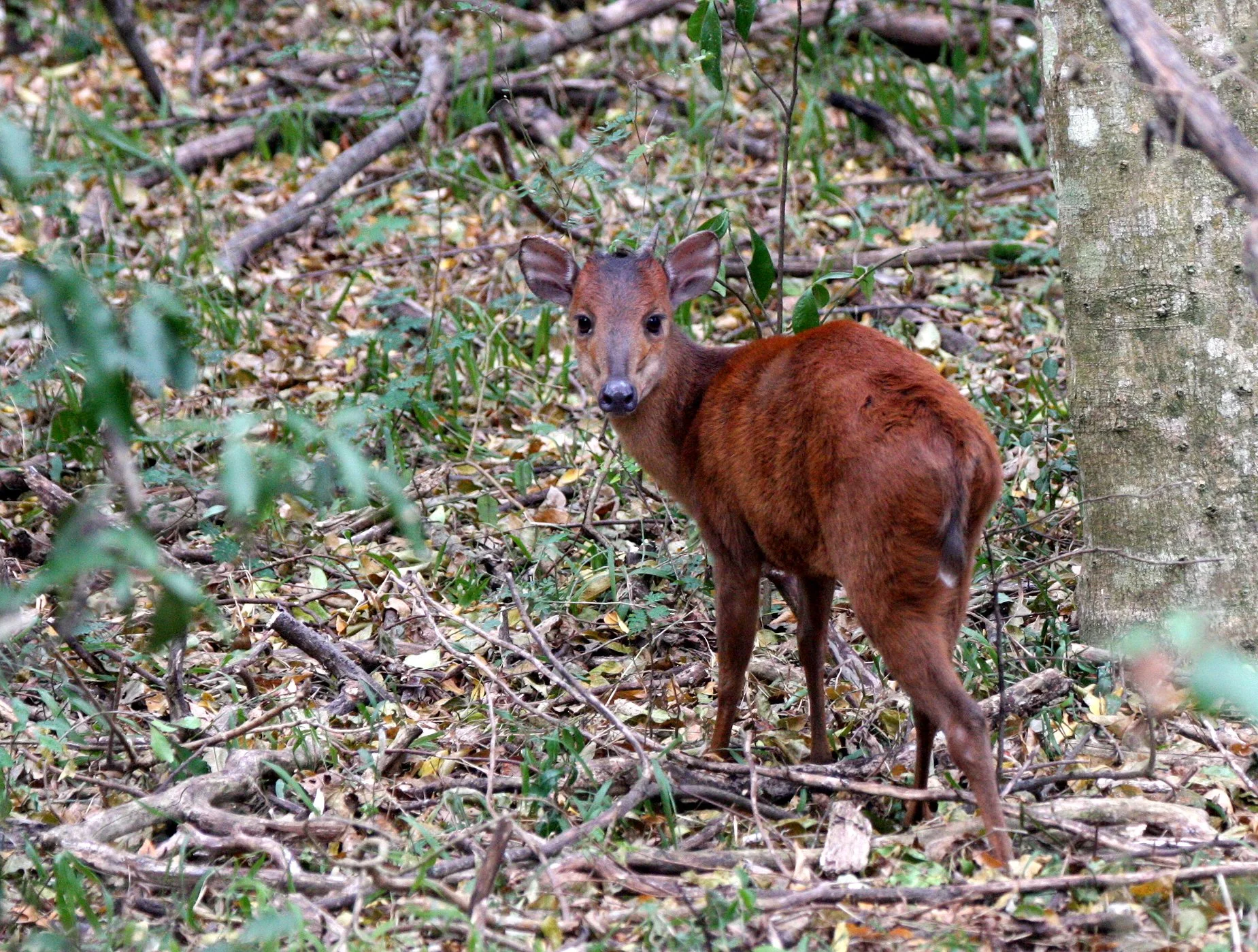



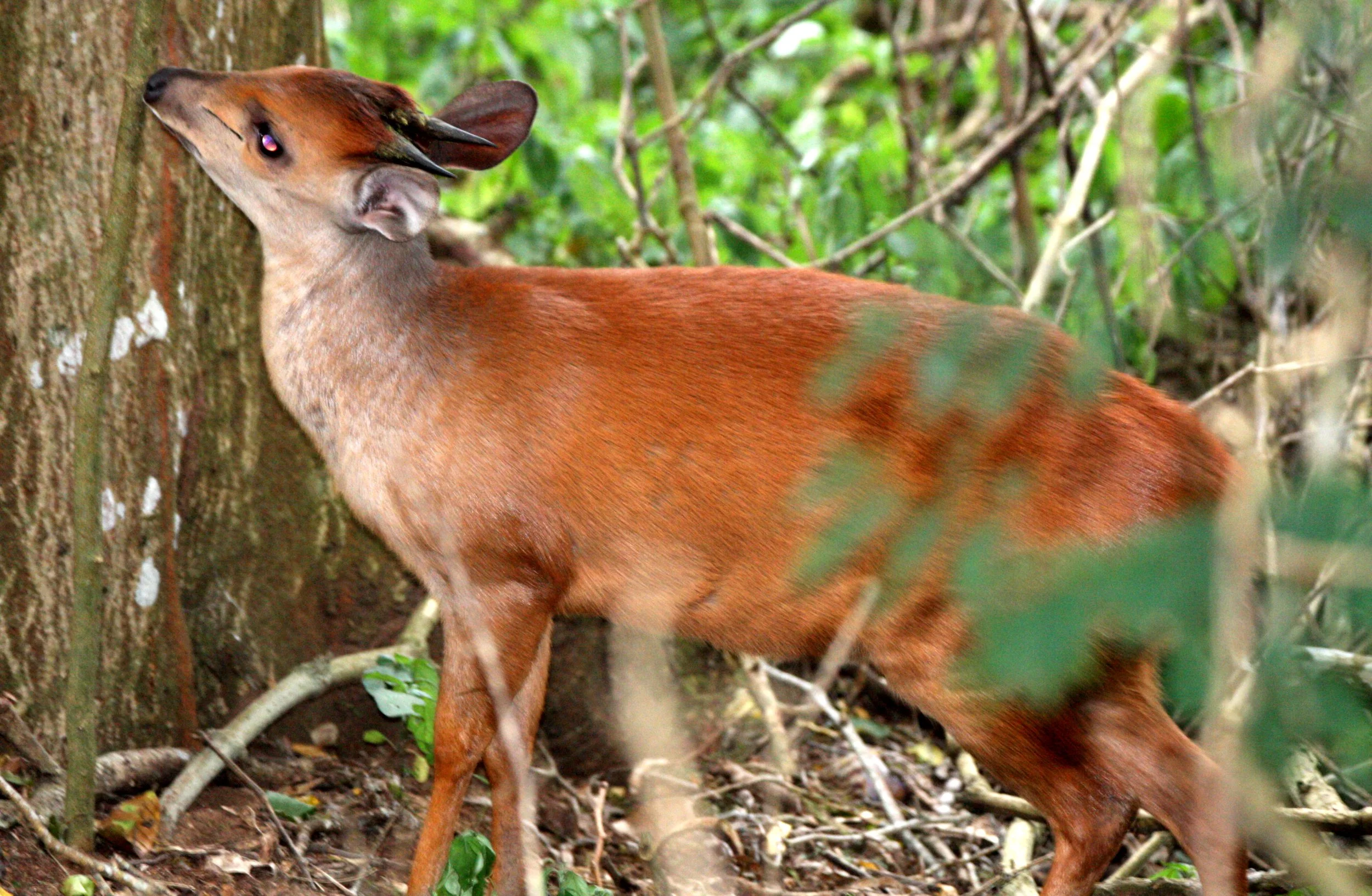
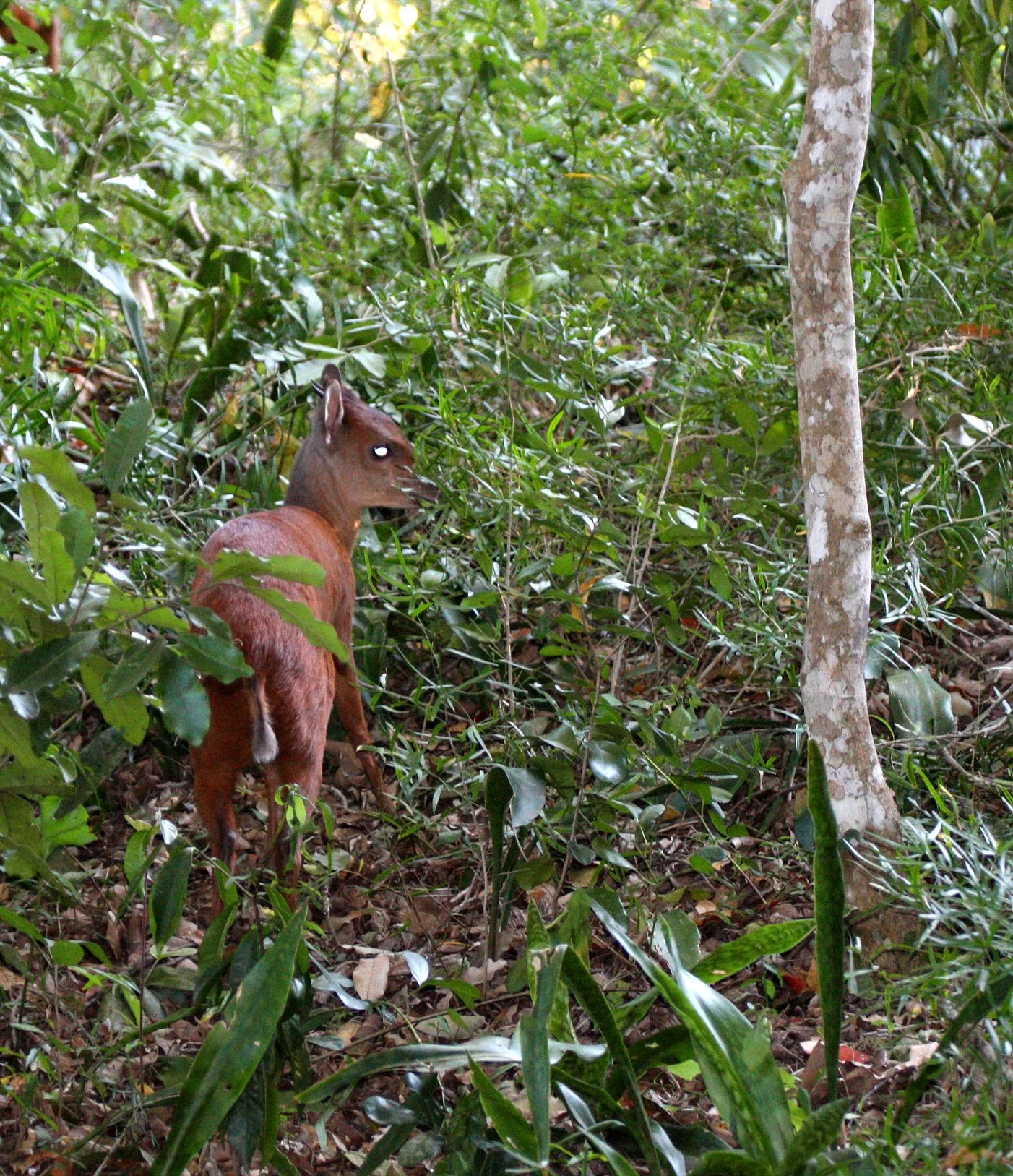





The Red-flanked Duiker (Cephalophus rufilatus) is a species of small antelope found in western and central Africa in countries as far apart as Senegal and Sudan.[2] Red-flanked duikers grow to almost 15 in (35 cm) in height and weigh up to 31 lb (14 kg). They have russet coats, with greyish-black legs and backs, and white underbellies. They feed on leaves, fallen fruits, seeds and flowers, and sometimes twigs and shoots. The adults are territorial, living in savannah and lightly wooded habitats, and the females usually produce a single offspring each year. They have lifespans of ten to fifteen years in captivity.
The red-flanked duiker is one of the smallest species of antelope, growing to a height of about 34 to 37 centimetres (13 to 15 in) with a weight of around 12 to 14 kilograms (26 to 31 lb). The head and body are blackish-grey near the spine gradually blending into a reddish-brown colour on the neck and flanks. There are small white markings on the ears and snout and a dark streak runs along the centre of the face. A tuft of black hairs grows between the horns and further coarse dark hairs grow along the top of the neck. The legs are bluish-grey. The sexes are in general similar in appearance but males have short backward-pointing horns up to 9 centimetres (3.5 in) long. Females are often hornless, or may have shorter horns. Both males and females have large preorbital glands on their snout in front of their eyes which form bulges in their cheeks. These are common to all members of the genus Cephalophus but they are larger in the red-flanked duiker than in other species.
The red-flanked duiker is native to West and Central Africa where its range extends from Senegal and the Gambia in the west to Sudan and the Nile Valley in the east. Its main habitat is open savannah woodlands and the margins of forests but it also occurs in river basins with elephant grass.
Red-flanked Duiker (Cephalophus rufilatus) - Central African Republic







